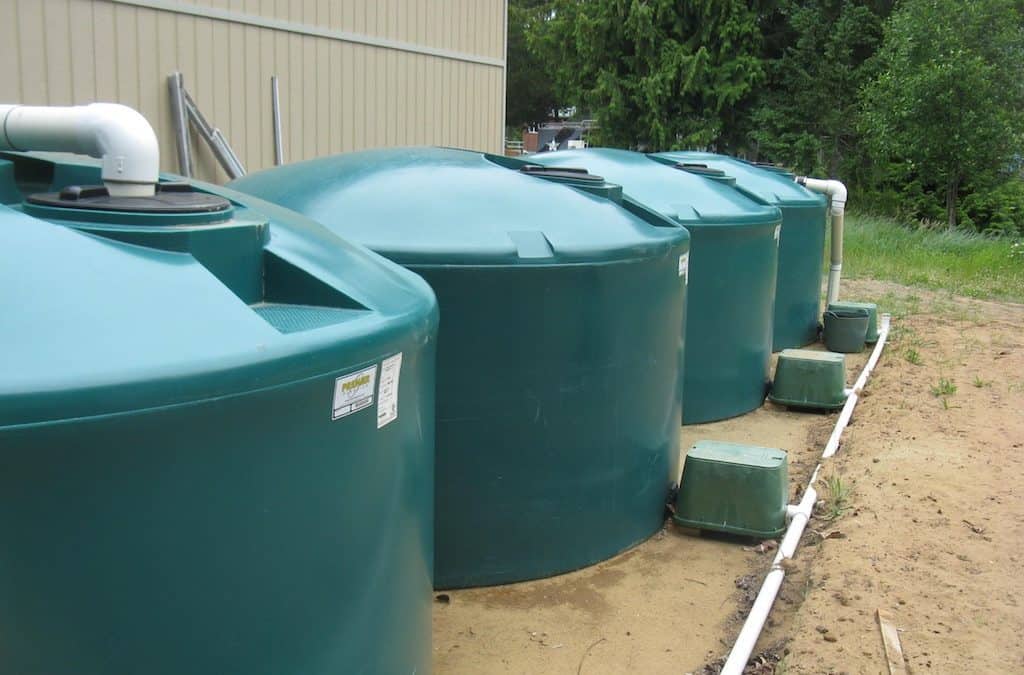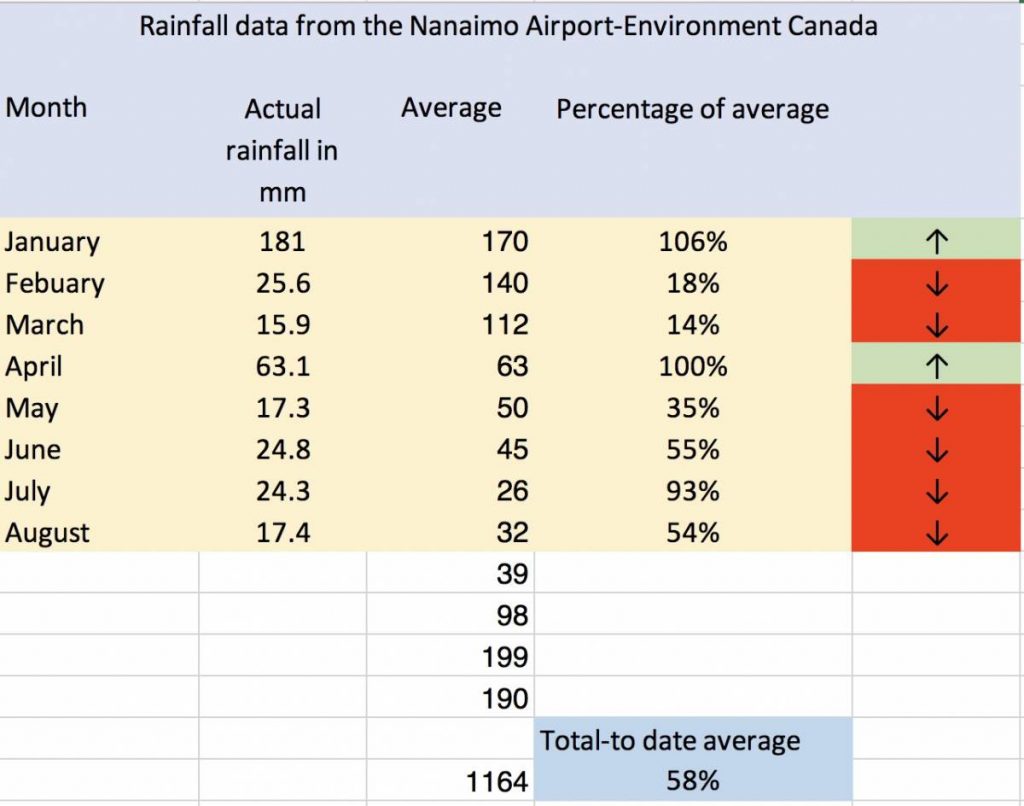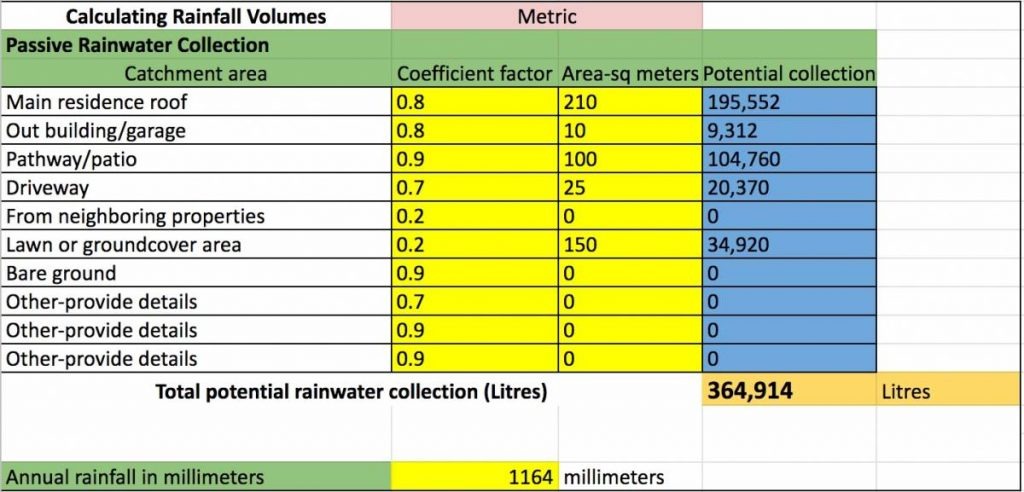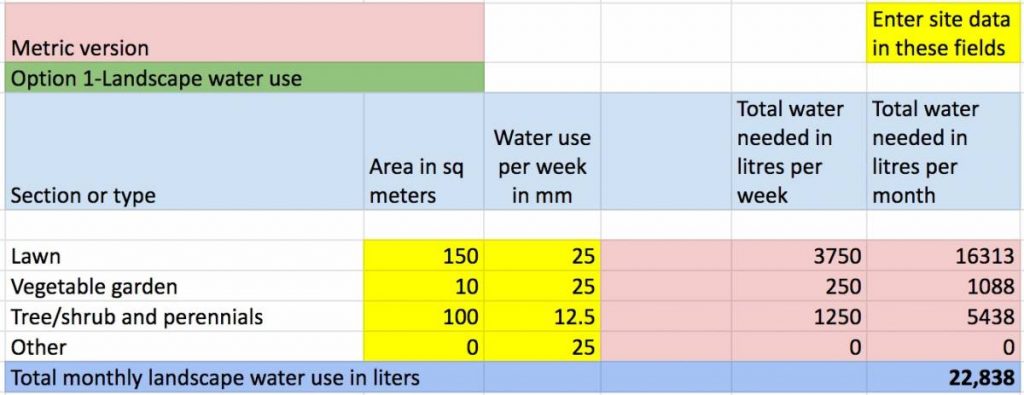Drought proofing your landscape-Part three
Well here we are, late August and our total rainfall to date are still below average.
On August 24th, 2019, our rainfall data for this area shows that we are around 58% of our average for the year. This translates into less water entering our watersheds, creeks, streams and rivers (which is causing stress for our returning salmon) as well as available water in our forests. When travelling along the island highway, you can see this water stress on our Western red cedar as well as our Red alder and Douglas fir.
If you have not seen part one or two of this article, you can see it here:
We can’t make it rain, but we can employ strategies within our landscape to reduce the drought pressure and make the best use of what water which falls upon our landscape.
In our last blog post, we talked about the value of collecting rainwater from our rooftops and storing this within cisterns for later use. Rainwater harvesting is a great strategy, but there are a number of critical factors (roof area, annual rainfall, storage size and usage) which determine whether it is feasible or not. The downside to this approach is it is heavily dependent on the size of your storage. We tend to collect most of our rainwater in the winter months and for use during our drier growing season.
In the Nanaimo area, if we look at an average city lot that is 6000 sq ft, we get some fascinating results which we see in the chart below. Total potential rainfall collection sites around 364,000 litres.
If we then look at our potential landscape usage based on this property, we get the following rough chart. Our monthly usage is sitting around 22,838 litres or 137,028 litres for a six-month growing season, virtually the years’ usage. It seems like we have over twice as much rainfall in an average year falling from the sky than we need to support our landscapes.
This brings up the question, why is it that we drain water away during the winter months and then pump it back in during the growing season. It seems like it’s a bit of a backwards approach. In my opinion, it is.
I can hear you all right about know thinking “Sure you get all this water but how am I going to store 140,000 litres (37,000 us gallons) in a cistern on my city lot?”
The answer would be, you can’t (not easily)…but what you can do is store water within your soils. This is often termed Passive rainwater collection, taking water from a surface (roof or paved area) and place it within the landscape, a rain garden is an example of this approach.
Stay tuned for our next blog post where we look at the specifics on how to take this ‘Free’ water supply and use it within your landscape.
I’m currently working with OSU (Oregon State University) on an online rainwater harvesting course which you can check out here:
By Jamie Wallace
Co-owner of Jaan Designs
Regenerative land designer, installer and educator





